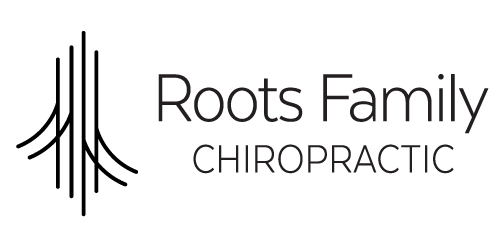A Letter From An OT About Chiropractic
/To the parent of a child with Sensory Processing Disorder (SPD),
Many people reading this blog don’t know that the writer is actually me, Lauren, Dr. Tom’s wife. Although you may know me as the “the girl” behind the front desk, I am also a licensed Occupational Therapist who has textbook knowledge, professional experience, and personal experience working with children who have SPD.
Does your child spin around in circles for hours if not stopped?
Are bright lights and loud noises enough to result in an outburst?
Find it difficult to stop "hand flapping" or other repetitive tendencies?
Is it challenging to find clothes that don't irritate your child?
Does your child appear to others as a "picky-eater"?
SPD is no longer a rare condition, but extremely common. However there is one thing to note: COMMON does not mean NORMAL. Any family who has a child with SPD knows that it is exhausting, heartbreaking, and difficult to wrap your head around. Although I see therapy services (i.e. OT, PT, Speech Therapy) as being beneficial for children suffering from SPD, I have also come to experience even greater benefits when children also receive care from a holistic provider such as a chiropractor. Every parent wants their child to thrive, not just plateau because their resources have exhausted all that they are able to provide.
Let’s explore the benefits of OT, chiropractic, and then the POWERFUL benefits when the two are combined:
Occupational Therapist’s Role:
An OT’s role is to help individuals maximize their participation in every day activities. In regards to children with SPD, the American Occupational Therapy Association (AOTA, 2015) states the role of an OT includes: identifying and modifying sensory and environmental barriers that limit performance, teach and model activities that support individualized needs, provide adaptive sensory/motor strategies using sensory approaches, and help raise the child’s self-awareness of the impact factors play on their everyday situations.
Many people are familiar with OTs providing the child a “Sensory Diet” during their treatment course. This diet is not a “nutritional diet”, but includes a personalized action plan to meet the child’s sensory needs. This diet is instructed to be used throughout the day, and is comprised of regulating activities for reducing sensory-seeking and/or sensory-avoiding tendencies. In other words, OTs provide the parents and child with “modifications” and “strategies” for how to cope with sensory input as it arises. The goal is for the input to lessen over time with consistent and appropriate strategy use.
Chiropractor’s Role:
Although chiropractic for children isn’t as well-known, and is definitely not the first step parents take after their child is diagnosed with SPD, it should be taken more seriously when it comes to neurological disorders. Chiropractors view your child’s nervous system as the “master controller” and want it functioning at 100%. It is the system that controls and coordinates EVERY OTHER system in the body, and helps you PERCEIVE your environment properly. As a parent of a child with SPD, you know that your child is having difficulty perceiving their environment, but have you also noted difficulties within other bodily systems such as digestion problems, anxiety, poor sleep, or decreased immune function? These areas are also affected by improper nervous system function, and are just a few “bonus” improvements parents notice after their child is under chiropractic care!
The role of a chiropractor is to detect and correct any stress on your child’s nervous system. This makes perfect sense when you recall that the SPINE is what surrounds and protects the spinal cord and nerve roots. In return, these areas send signals back and forth to the brain for your body to function properly. But stress shouldn’t just be thought of as “emotional stress”. Stress should also be thought of as “physical stress” (traumas), and “chemical stress” (toxins). In our office, we pride ourselves on completing thorough initial consultations so that Dr. Tom can be aware of how your child’s birth process, childhood accidents, nutritional intake, and other chemical stressors have been impacting your child’s nervous system overtime.
It is important to note that adjustments directly impact the nervous system and are safe, gentle, and effective. They allow the body to begin to self-regulate again by removing stress to the nervous system, aka “pumping the breaks” on your child’s “fight-or-flight” state of being with SPD.
Combined Effect:
Both OTs and chiropractors hold the common goal of working towards increasing the quality of life for children and parents dealing with SPD. However, when both services are combined, children have GREATER potential due to the nervous system being freed of interference.
One study completed by Ari Cohn, D.C. (2011), validates the importance of combined services for children with SPD. This case study explores in detail how benefits can arise more quickly when chiropractic is added to the child’s care.
“The patient’s mother reported that her son’s communication skills had improved dramatically, he was walking and even starting to run, his bruxism had reduced and his language skills had improved overall. She also reported that the occupational and physical therapists that were working with him had stated that they had never had a case improve this dramatically in such a short time period (after starting chiropractic care). They inquired whether she was supplementing their care. The only supplement being performed for her son was chiropractic. The therapists opined that the chiropractic care was speeding up his development.”
Reference:
http://www.princetonchiropractic.com/papers/publishedautismstudy.pdf
Be well,
Lauren
If you are a parent of a child with SPD,
and are searching for different results, don’t hesitate!
We look forward to welcoming you into our family at Roots Family Chiropractic.
If you would like to find out more, call our office at 312.724.8724 to schedule your initial consultation appointment.



